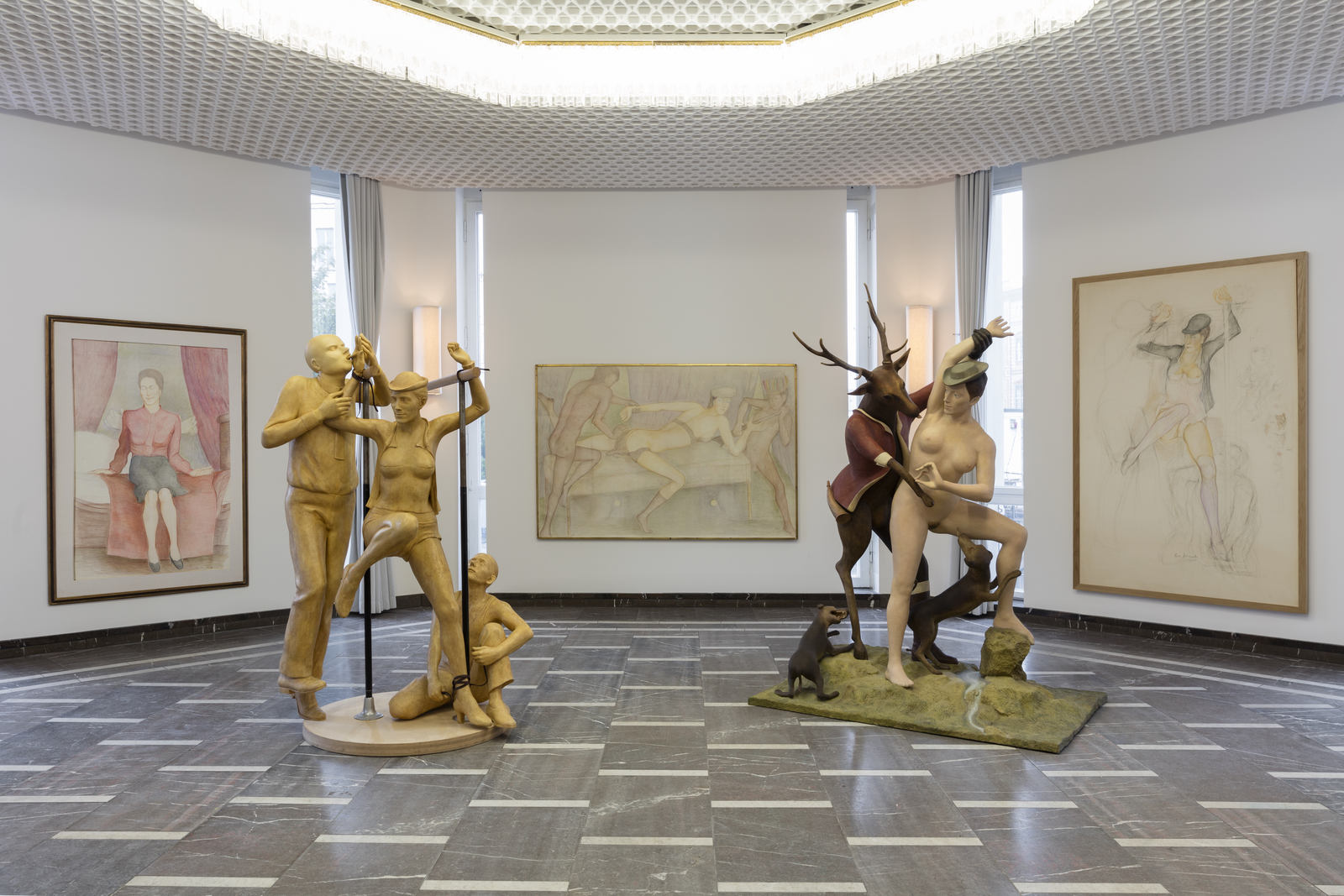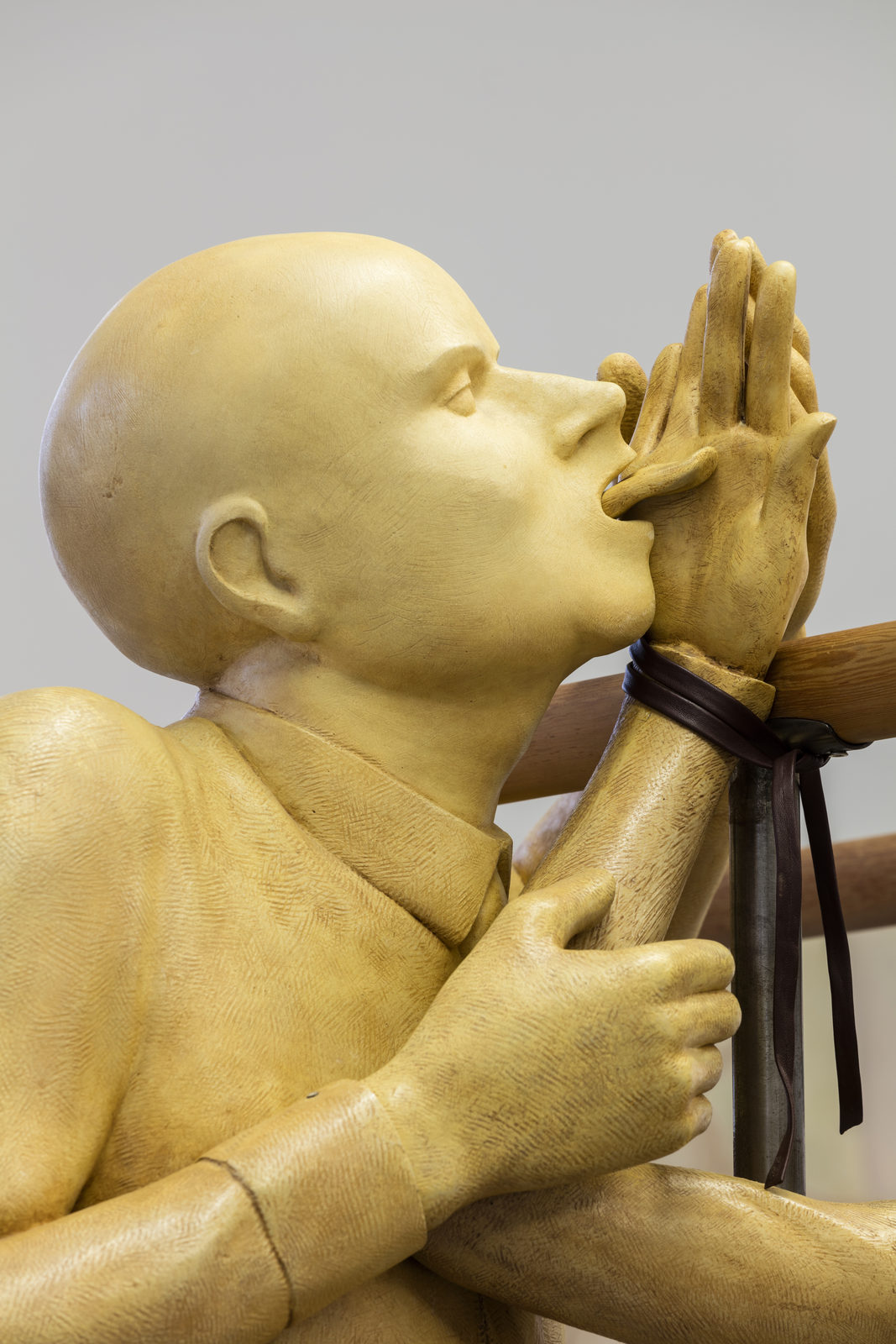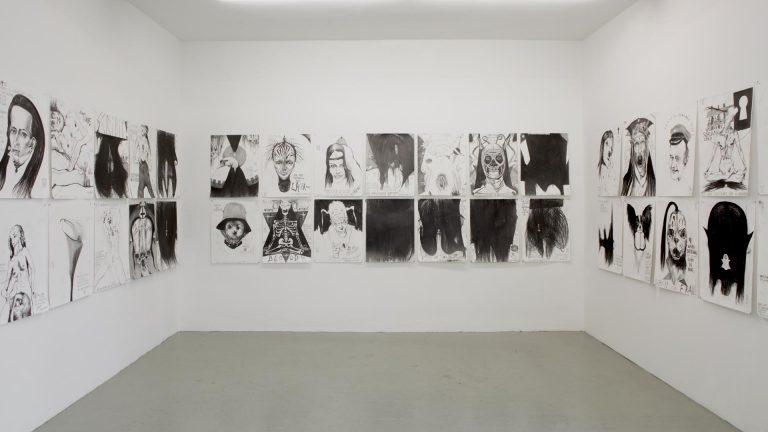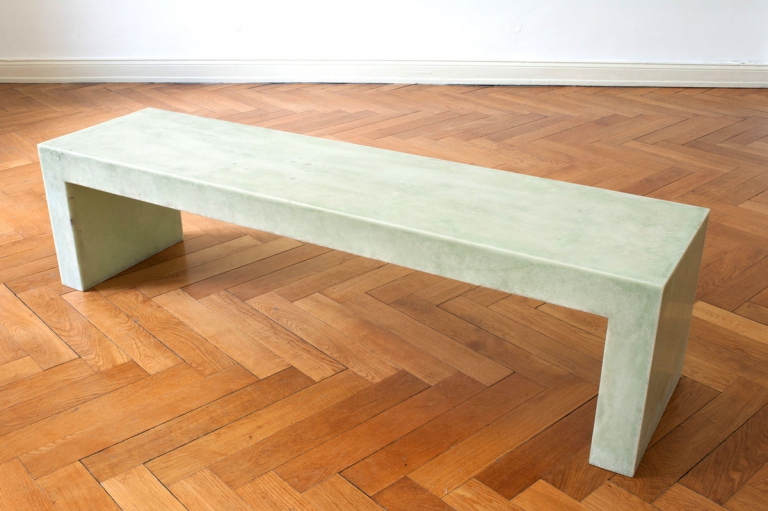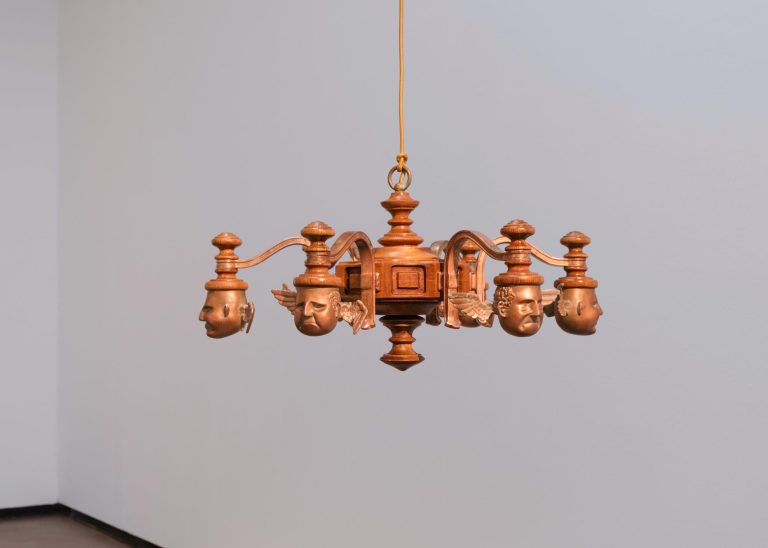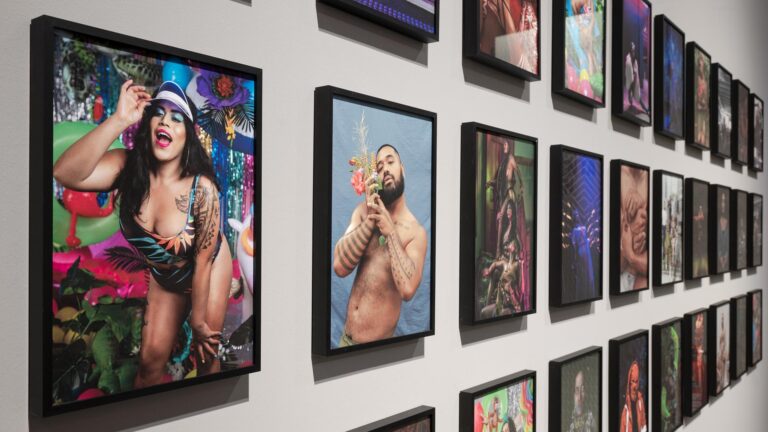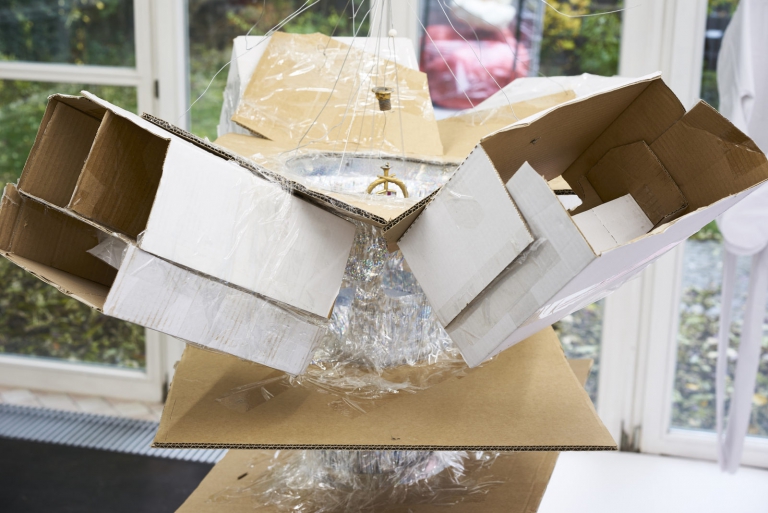Artist: Pierre Klossowski
Exhibition title: Roberte Ce Soir
Venue: Schinkel Pavillon, Berlin, Germany
Date: March 18 – May 14, 2017
Photography: Andrea Rossetti, all images copyright and courtesy of the artist and Schinkel Pavillon, Berlin
Pierre Klossowski (1905-2001) has developed a complex myth surrounding the character ‘Roberte’. In the midst of a modern urban setting, the androgynous protagonist attracts the attention of strangers, who kidnap her and drag her into a basement, where she is tied to a turn bar and sexually overpowered. The situation oscillates between power and plight in ever-increasing measures. Scenes like in ‘Les Barres Parallèles IV’, characterize Klossowski’s series of drawings about ‘Roberte’, and the ambivalent nature of voyeurism, abuse and autonomous sexuality, as well as physical presence and emotional absence.
Schinkel Pavillon devotes the exhibition ‘Roberte Ce Soir’ exclusively to ‘Roberte’, the main subject of Pierre Klossowski’s largest drawing and sculpture series, which for the first time will be shown as a group in Berlin. The title of the show is based on the eponymous book written and illustrated by Klossowski in 1953, for which he produced his first drawings. The central female character of the book, Roberte, follows a code of conduct decreed by her husband Octave; the first rule requires her to be sexually available to the guests at home. By following this so-called ‘law of hospitality’, Roberte reveals her true nature as faithful to infidelity. The narrative juxtaposes commandment and forbiddance, pleasure and defense, prudery and licentiousness, in a subjective manner that continuously plays with nuances of interpretation. Klossowski’s fictitious trilogy, Les Lois de L’hospitalité – which also includes ‘Roberte Ce Soir’ – became the basis for Pierre Zucca’s film, ‘Roberte’ from 1978, with both Pierre and his wife Denise in the leading roles.
‘Roberte Ce Soir’ examines the complexity of Roberte’s character within Klossowski’s oeuvre, blurring the boundaries of reality, fiction, and image; Roberte looks unmistakably like Denise, Pierre Klossowski’s wife, though the fictitious character is not to be equated with her. According to Klossowski, truth is depicted in the image and the image represents the absence of being. In Pierre Klossowski’s exemplary scenes, not only are the sight-lines negotiated, ranging from the resolute to the submissive, but also the intricacy of roleplaying between a regulated and restricted sexuality. The life-size drawings are executed solely with pencil or colored pencil, encouraging a formal relationship between viewer and pictorial space.
Pierre Klossowski’s sculptures, created in the 1990s are also based on this: Referencing the original drawings from 1953, Klossowski transformed them into dioramas with an almost intimidating physical presence. His oeuvre often contains mythical references, even devoting an entire book, drawings and also the sculpture “Diane et Actéon”, also on view at Schinkel Pavillon, to the saga of Diana and Actaeon. In this myth, the hunter Actaeon accidentally surprises the goddess of the hunt and personification of chastity, Diana, who is caught bathing naked in a spring in the forest. Because of his crime, Diana turns Actaeon into a deer that is tracked down by his own dogs and torn to bits. The myth offers an iconographic framework within which Klossowski examines various moral interpretations of power, aggression and love.
Pierre Klossowski was temporarily a priest, he was an author of significant philosophical and art-theoretical texts, and an artist. He was the older brother of artist Balthus and in Berlin was taken under the wing by Rainer Maria Rilke. In the 1930s in Paris Klossowski developed interdisciplinary concepts within the impetuous environment of important Surrealists like Georges Bataille or André Breton. After a religious crisis in the early 1940s, he began to live as a monk, spending a few years in monasteries. In 1946 Klossowski became a Catholic priest – until shortly afterwards he met his wife and muse Denise Marie Roberte. The dogmatism of Christian thought has remained a (somewhat critical) reference point in his work. Thus his novels, pictures, and philosophical writings, created since the 1950s, orbit around Catholicism as an eroticism, yet Klossowski’s eroticism is rather a mental attitude: a symbiosis of obsession, the saint, and lust; and a system of taboos and rules, in which lust stems from the transgression of prohibitions. Following an undogmatic thought of art and morality, Klossowski, in referencing Marquis de Sade, continually addresses the subject of desire, from the spiritual to the sexual ecstasy.
Through this complexity, Klossowski’s work has epitomized modern ideas and his writings have influenced poststructuralism French thinkers such as Jean-François Lyotard, Jacques Derrida, Gilles Deleuze and Michel Foucault. Klossowski has also become a role model for a many contemporary artists, which is why the Schinkel Pavillon is particularly pleased to present this exhibition alongside a forum for contemporary discourse through and with the works of Pierre Klossowski. Within this context, the exhibition ‘Roberte Ce Soir’ is accompanied in the Schinkelklause by a film program curated by Marc Glöde, including artist films by Willard Maas and Carolee Schneemann as well as more recent works such as those by Leigh Ledare.
Christina Irrgang
Camilla von dem Bussche




